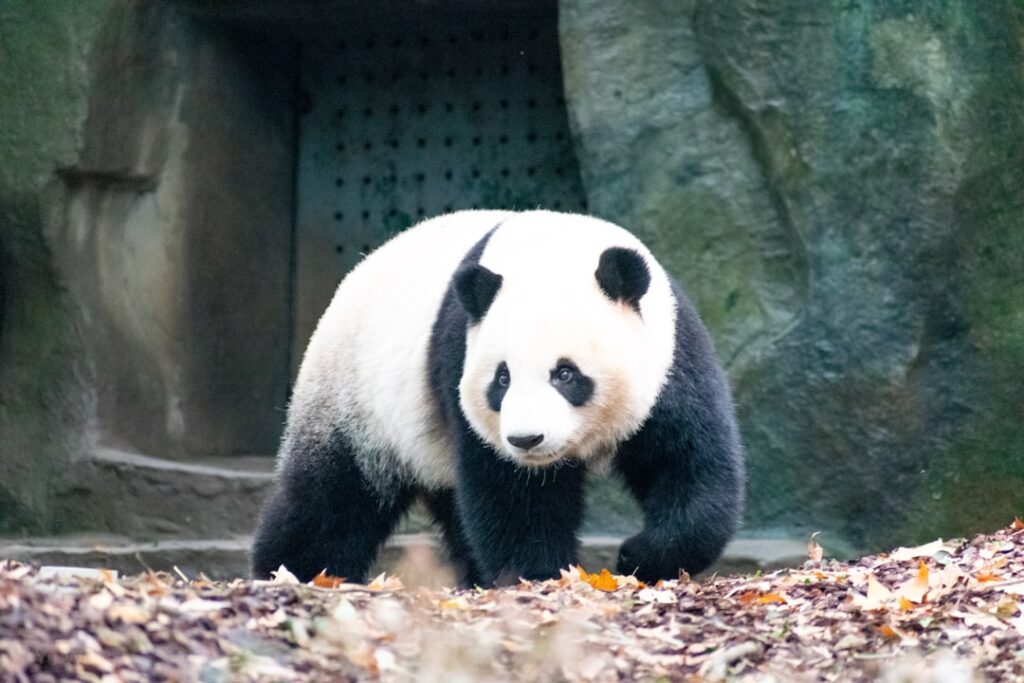The Dire Bear, also known as Arctodus simus, was a prehistoric bear species that roamed North America during the Pleistocene epoch, approximately 1.8 million to 11,000 years ago. It was one of the largest terrestrial mammalian carnivores of its time, with a size and strength that rivaled that of modern-day bears. The name “Dire Bear” is derived from its formidable size and ferocious nature, making it a fearsome predator in its ancient ecosystem. The Dire Bear has captured the imagination of scientists and enthusiasts alike, as its existence provides valuable insights into the prehistoric world and the dynamics of ancient ecosystems.
The Dire Bear’s impressive size and predatory nature have made it a subject of fascination and study for paleontologists and researchers. Its significance in understanding prehistoric ecosystems and the interactions between species cannot be overstated. As we delve into the discovery, physical characteristics, habitat, behavior, and role in ancient ecosystems, we gain a deeper understanding of the Dire Bear’s place in the natural world and the implications of its extinction. Additionally, modern-day efforts to bring the Dire Bear back to life through genetic technology raise ethical and ecological questions that warrant careful consideration. The story of the Dire Bear is a compelling narrative that sheds light on the complexities of prehistoric life and the potential impact of scientific advancements on our modern world.
Key Takeaways
- The Dire Bear was a prehistoric bear species that lived during the Pleistocene epoch.
- The discovery of the Dire Bear was made through fossil remains found in North America.
- Dire Bears were massive creatures, with some individuals reaching sizes comparable to modern-day polar bears.
- These bears inhabited a wide range of environments, from forests to grasslands, and were likely omnivorous.
- The extinction of the Dire Bear is thought to be linked to climate change and human hunting, and there are modern-day efforts to bring them back to life through genetic engineering.
The Discovery of the Dire Bear
The first evidence of the Dire Bear’s existence was unearthed in the mid-19th century, when fossils of this prehistoric bear were discovered in North America. These fossils provided paleontologists with valuable insights into the size, structure, and behavior of this ancient creature. The discovery of the Dire Bear sparked widespread interest and further exploration into its evolutionary history and ecological significance.
In 1854, the first known fossil of the Dire Bear was discovered in Indiana, United States. Subsequent findings in various parts of North America, including California, Florida, and Mexico, have contributed to our understanding of the Dire Bear’s distribution and habitat during the Pleistocene epoch. These discoveries have allowed scientists to reconstruct the physical characteristics and behavior of the Dire Bear, shedding light on its role as a top predator in ancient ecosystems. The study of Dire Bear fossils has provided valuable data for paleontologists seeking to unravel the mysteries of prehistoric life and understand the dynamics of ancient food webs.
Physical Characteristics of the Dire Bear
The Dire Bear was an imposing creature, with a size and strength that set it apart from other bear species. It stood at an estimated height of 11 feet when standing on its hind legs, making it one of the largest terrestrial carnivores of its time. Its weight is estimated to have been around 2,000 pounds, making it significantly larger than modern-day bears such as the grizzly or polar bear. The Dire Bear’s massive size and powerful build made it a formidable predator in its ancient environment.
In addition to its impressive size, the Dire Bear had distinct physical features that set it apart from other bear species. Its skull was elongated and narrow, with powerful jaws and large teeth adapted for hunting and consuming large prey. Its limbs were robust and well-suited for supporting its massive frame, allowing it to move with agility and strength. The Dire Bear’s physical characteristics indicate that it was well-adapted to its role as a top predator in the Pleistocene ecosystem, where it likely competed with other large carnivores for food and territory.
Habitat and Behavior of the Dire Bear
| Aspect | Description |
|---|---|
| Habitat | Dire bears are typically found in forested areas, preferring dense woodlands with ample food sources such as berries, nuts, and fish-filled streams. |
| Behavior | These bears are known for their solitary nature, often roaming alone or with their cubs. They are also skilled climbers and swimmers, allowing them to access a wide range of habitats. |
The Dire Bear inhabited a diverse range of environments across North America during the Pleistocene epoch. Fossil evidence suggests that it roamed across grasslands, forests, and tundra regions, indicating a broad ecological range. Its ability to adapt to different habitats speaks to its versatility as a predator and scavenger, allowing it to thrive in various ecosystems.
In terms of behavior, the Dire Bear is believed to have been a solitary animal, with individuals primarily seeking out food and territory on their own. Its formidable size and strength would have made it a dominant force in its environment, allowing it to assert its dominance over other predators and compete for resources. The Dire Bear’s hunting strategies likely involved ambushing large prey or scavenging carcasses, utilizing its powerful jaws and teeth to consume meat and bone. Its role as a top predator would have had significant implications for the dynamics of ancient ecosystems, shaping the distribution and behavior of other species within its habitat.
The Role of the Dire Bear in Prehistoric Ecosystems
As a top predator in the Pleistocene ecosystem, the Dire Bear played a crucial role in shaping the dynamics of ancient food webs and influencing the distribution of other species. Its formidable size and predatory nature would have had cascading effects on the populations of herbivores and smaller carnivores within its habitat. The presence of the Dire Bear would have influenced the behavior and distribution of other species, creating a complex web of interactions that shaped the structure of prehistoric ecosystems.
The extinction of the Dire Bear likely had significant repercussions for the balance of species within its ecosystem. With the removal of such a large predator from the food web, there would have been ripple effects on the populations of herbivores and smaller carnivores that were once under its influence. The absence of the Dire Bear would have altered the competitive dynamics among other predators, potentially leading to shifts in population sizes and distribution patterns. Understanding the role of the Dire Bear in prehistoric ecosystems provides valuable insights into the interconnectedness of species and the delicate balance that governs natural environments.
Extinction of the Dire Bear

The exact reasons for the extinction of the Dire Bear remain a subject of debate among scientists and researchers. While there is no single definitive cause for its demise, several factors are believed to have contributed to its extinction. Changes in climate, habitat loss, competition with other predators, and human hunting are all potential factors that may have played a role in the decline of the Dire Bear population.
During the late Pleistocene epoch, significant climatic changes occurred, leading to shifts in temperature and vegetation patterns across North America. These changes would have impacted the availability of food and habitat for the Dire Bear, potentially leading to increased competition with other predators for limited resources. Additionally, human hunting may have contributed to the decline of the Dire Bear population as early human populations expanded across North America. The combination of these factors likely placed significant pressure on the survival of the Dire Bear, ultimately leading to its extinction at the end of the Pleistocene epoch.
Bringing the Dire Bear Back to Life: Modern-Day Efforts and Implications
In recent years, advances in genetic technology have raised the possibility of bringing extinct species back to life through de-extinction efforts. The concept of resurrecting prehistoric creatures such as the Dire Bear has sparked both excitement and controversy within scientific and ethical circles. While some view de-extinction as a way to restore lost biodiversity and correct past human-induced extinctions, others raise concerns about potential ecological disruptions and ethical considerations.
Efforts to bring back extinct species such as the Dire Bear involve extracting DNA from well-preserved fossils and using genetic engineering techniques to recreate their genetic code. This genetic material can then be inserted into closely related living species or used to create hybrid organisms with traits resembling those of their extinct counterparts. While these advancements hold promise for reviving lost species, they also raise complex ethical questions about playing “ecological roulette” by introducing resurrected species into modern ecosystems.
The implications of bringing back extinct species such as the Dire Bear extend beyond scientific curiosity and technological prowess. They prompt us to consider our role as stewards of the natural world and our responsibility to preserve biodiversity through conservation efforts. While de-extinction may offer opportunities to restore lost species and repair ecological damage, it also requires careful consideration of potential risks and unintended consequences. As we navigate these ethical and ecological dilemmas, we are reminded of our interconnectedness with all living beings and our duty to safeguard the delicate balance of our planet’s ecosystems.
If you’re interested in learning more about the dire bear, you should check out this fascinating article on Reverie de Paris. This article delves into the history and characteristics of the dire bear, providing a comprehensive look at this fascinating prehistoric creature. It’s a great resource for anyone looking to expand their knowledge on this ancient species.
FAQs
What is a dire bear?
A dire bear is an extinct species of bear that lived during the Pleistocene epoch. It was larger and more robust than modern bears.
How big was a dire bear?
Dire bears were significantly larger than modern bears, with some estimates suggesting they could weigh up to 3,500 pounds and stand over 11 feet tall when on their hind legs.
Where did dire bears live?
Dire bears lived in North America during the Pleistocene epoch, which lasted from about 2.6 million years ago to 11,700 years ago.
What did dire bears eat?
Dire bears were omnivorous, meaning they ate both plants and animals. Their diet likely included fruits, nuts, roots, insects, and small mammals.
Why did dire bears go extinct?
The exact reasons for the extinction of dire bears are not fully understood, but it is believed that a combination of climate change and human hunting may have contributed to their demise.


